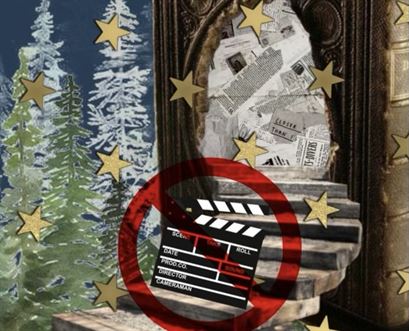The opinion pieces expressed in this publication, The Montclarion, are those of the author(s). They do not claim to reflect the opinions or views of the The Montclarion, other than Editorials written by The Montclarion Editorial Board staff.
I want to start off by declaring we do not need to cast off every adaptation if it is not firmly rooted in the book. As someone who reads, and is guilty of harking on the “faithfulness” aspect, I agree with the sentiment that it can veer off from the novel and still be a worthwhile and relevant showing.
Hearing that a book will be made into a movie usually provokes excitement, as I am eager to see the clearly outlined characters and plot imagined by the actors I believe would best embody the mannerisms and energy of the story. But, there are a few times when I don’t think a movie adaptation would be all that entertaining or worth the effort. I might even say it has the possibility of “tainting” the story, or at least peoples’ interpretations of it. In such cases, it becomes more work for the readers when we have to run it back and persuade people that the book is better, and they should “give it a read, trust me!”
It is redundant to say that a poor book will most likely make a poor movie, although there are certainly instances of the film being better. But we are looking at books that have had a positive reception overall.
What is interesting about these kinds of films is how the director’s interpretation of the story is juxtaposed against our own, as opposed to an original story or a biography, where accuracy is almost everything. It is more intriguing when we revisit a book multiple times in our lifetime and see how our understanding of it evolves. A good book still manages to make us think and question the story and its relation to us.
And that is what a movie adaptation is at its core: one person’s interpretation of a story we all feel differently about, yet come together to witness.
So the question remains: when is a movie adaptation not needed?
The singular answer could be this: books that provoke vastly different reactions in everyone, and make it difficult to narrow it down to one interpretation that can reach the audience, may not be possible, as it takes away the “magic” from the story.
Such narratives are an interesting challenge to filmmakers, and there are instances where a creative director is able to blend both: their take on the story while still preserving the ambiguity that makes us think about the story well after we have seen it. Such movies leave an impression on everyone, watchers and readers alike.
But more often than not, these adaptations tend to fall victim to one of two outcomes. Either the movie fails to have a singular, unifying focus (as a book can contain multiple focuses, but a movie’s duration forces it to have one), or does not add anything new to the story and simply reiterates verbatim what the book told us.
When a story is that ambiguous, it is almost nice to know that no one really can confirm an exact explanation, especially when the author refuses to answer the “why?” question about their character. The continual debate and speculation the story provokes is what keeps us returning to it and draws in new readers. If a movie can accomplish that, then it too can be a continually-rewarding piece of media.
I end this article by asking, “What kind of story can only exist on paper?” JD Salinger patented “Catcher in the Rye” to not be made into a movie or play. All authors have the right to prohibit their story from being made into a movie, be it whatever reason. Salinger believed that such characters really could not exist outside the world he created. Perhaps this raises another question: does it simply take a certain kind of creativity to do justice to these stories? Maybe to answer that, we need to read and find out.



